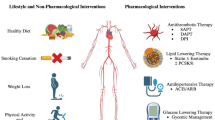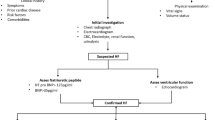Abstract
Objectives
Presence of diabetes mellitus has been shown to be related with the occurrence of primary arteriovenous fistula (AVF) failure in some but not in all studies. In the current study, we examined whether glycemic control as evaluated by HbA1c is independently related with primary AVF failure.
Methods
We recorded sociodemographic, clinical, and laboratory parameters of the patients from medical records and hospital charts prior to AVF surgery. Primary AVF failure was described as a complication of the AVF before the first successful cannulation for HD treatment.
Results
Our study comprised of 160 non-diabetic (Group1) and 73 diabetic patients. Among diabetic patients, 37 had HbA1c values <7% (Group 2) and 36 patients had HbA1c values ≥7% (Group 3). In total, 74 (31.8%) patients had a history of primary AVF failure. The percentages of primary AVF failure were 27.5, 29.7, and 52.8% in Group 1, Group 2, and Group 3, respectively (P: 0.013). The percentage of patients with primary AVF failure was significantly lower in Group 1 and Group 2 than in Group 3 (P:0.003 and P:0.045, respectively). There was no difference with respect to primary AVF failure between Group 1 and Group 2 patients.
Conclusions
We suggest that poor glycemic control as assessed by HbA1c may be an important factor for the development of primary AVF failure among diabetic subjects. It is possible that differences with respect to AVF failure between diabetic and non-diabetic patients may be partly attributed to glycemic control.

Similar content being viewed by others
References
Allon M, Robbin ML (2002) Increasing arteriovenous fistulas in hemodialysis patients: problems and solutions. Kidney Int 62:1109–1124
Polkinghorne KR, McDonald SP, Atkins RC et al (2004) Vascular access and all-cause mortality: a propensity score analysis. J Am Soc Nephrol 15:477–486
Dember LM, Beck GJ, Allon M et al (2008) Effect of clopidogrel on early failure of arteriovenous fistulas for hemodialysis: a randomized controlled trial. JAMA 299:2164–2171
Asif A, Roy-Chaudhury P, Beathard GA (2006) Early arteriovenous fistula failure: a logical proposal for when and how to intervene. Clin J Am Soc Nephrol 1:332–339
Robbin ML, Chamberlain NE, Lockhart ME et al (2002) Hemodialysis arteriovenous fistula maturity: US evaluation. Radiology 225:59–64
Huijbregts HJ, Bots ML, Wittens CH et al (2008) Hemodialysis arteriovenous fistula patency revisited: results of a prospective multicenter initiative. Clin J Am Soc Nephrol 3:714–719
Lin SL, Huang CH, Chen HS et al (1998) Effects of age and diabetes on blood flow rate and primary outcome of newly created hemodialysis arteriovenous fistulas. Am J Nephrol 18:96–100
Murphy GJ, Saunders R, Metcalfe M et al (2002) Elbow fistulas using autogeneous vein: patency rates and results of revision. Postgrad Med J 78:483–486
Manns BJ, Burgess ED, Parsons HG et al (1999) Hyperhomocysteinemia, anticardiolipin antibody status, and risk for vascular access thrombosis in hemodialysis patients. Kidney Int 55:315–320
Konner K (2000) Primary vascular access in diabetic patients: an audit. Nephrol Dial Transplant 15:1317–1325
Windus DW (1993) Permanent vascular access: a nephrologist’s view. Am J Kidney Dis 21:457–471
Giugliano D, Ceriello A, Esposito K (2008) Glucose metabolism and hyperglycemia. Am J Clin Nutr 87:217S–222S
Intensive blood-glucose control with sulphonylureas or insulin compared with conventional treatment and risk of complications in patients with type 2 diabetes (UKPDS 33). UK Prospective Diabetes Study (UKPDS) Group (1998) Lancet 352: 837–53
Nathan DM, Cleary PA, Backlund JY et al (2005) Intensive diabetes treatment and cardiovascular disease in patients with type 1 diabetes. N Engl J Med 353:2643–2653
Willfort-Ehringer A, Ahmadi R, Gessl A et al (2004) Neointimal proliferation within carotid stents is more pronounced in diabetic patients with initial poor glycaemic state. Diabetologia 47:400–406
Osende JI, Badimon JJ, Fuster V et al (2001) Blood thrombogenicity in type 2 diabetes mellitus patients is associated with glycemic control. J Am Coll Cardiol 38:1307–1312
Guo LX, Pan Q, Wang XX et al (2008) Effect of short term intensive multi-therapy on carotid intima-media thickness in patients with newly diagnosed type 2 diabetes mellitus. Chin Med J (Engl) 121:687–690
Kawasumi M, Tanaka Y, Uchino H et al (2006) Strict glycemic control ameliorates the increase of carotid IMT in patients with type 2 diabetes. Endocr J 53:45–50
Huijbregts HJ, Bots ML, Moll FL et al (2007) Hospital specific aspects predominantly determine primary failure of hemodialysis arteriovenous fistulas. J Vasc Surg 45:962–967
Mathew V, Gersh BJ, Williams BA et al (2004) Outcomes in patients with diabetes mellitus undergoing percutaneous coronary intervention in the current era: a report from the prevention of REStenosis with Tranilast and its Outcomes (PRESTO) trial. Circulation 109:476–480
Berceli SA, Davies MG, Kenagy RD et al (2002) Flow induced neointimal regression in baboon polytetrafluoroethylene grafts is associated with decreased cell proliferation and increased apoptosis. J Vasc Surg 36:1248–1255
Qin F, Dardik H, Pangilinan A, Robinson J, Chuy J, Wengerter K (2001) Remodeling and suppression of intimal hyperplasia of vascular grafts with a distal arteriovenous fistula in a rat model. J Vasc Surg 34:701–706
Steffen LM, Duprez DA, Boucher JL et al (2008) Management of peripheral arterial disease. Diabetes Spectr 21:171–177
Selvin E, Marinopoulos S, Berkenblit G et al (2004) Meta-analysis: glycosylated hemoglobin and cardiovascular disease in diabetes mellitus. Ann Intern Med 141:421–431
Lakatta EG (2003) Arterial and cardiac aging: major shareholders in cardiovascular disease enterprises: part III: cellular and molecular clues to heart and arterial aging. Circulation 107:490–497
Hadi HA, Suwaidi JA (2007) Endothelial dysfunction in diabetes mellitus. Vasc Health Risk Manag 3:853–876
Spinetti G, Kraenkel N, Emanueli C et al (2008) Diabetes and vessel wall remodelling: from mechanistic insights to regenerative therapies. Cardiovasc Res 78:265–273
Kaufman JS, O’Connor TZ, Zhang JH et al (2003) Randomized controlled trial of clopidogrel plus aspirin to prevent hemodialysis access graft thrombosis. J Am Soc Nephrol 14:2313–2321
Hasegawa T, Elder SJ, Bragg-Gresham JL et al (2008) Consistent aspirin use associated with improved arteriovenous fistula survival among incident hemodialysis patients in the dialysis outcomes and practice patterns study. Clin J Am Soc Nephrol 3:1373–1378
Conflict of interest
None.
Author information
Authors and Affiliations
Corresponding author
Rights and permissions
About this article
Cite this article
Afsar, B., Elsurer, R. The primary arteriovenous fistula failure—a comparison between diabetic and non-diabetic patients: glycemic control matters. Int Urol Nephrol 44, 575–581 (2012). https://doi.org/10.1007/s11255-011-9978-x
Received:
Accepted:
Published:
Issue Date:
DOI: https://doi.org/10.1007/s11255-011-9978-x




